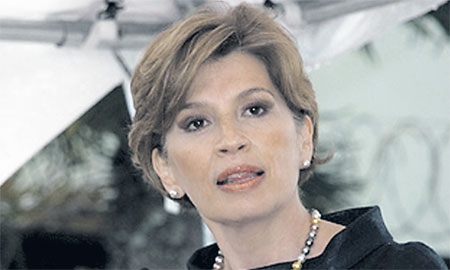Costa Rica’s social and political stability has much to do with its economy, which has changed with the times, moving from a primarily agricultural base to a diversified economy with increasingly important knowledge-based sectors.
Today, the government is discussing taking this one step further, pushing for a transition from ‘made in Costa Rica’ towards ‘created in Costa Rica’.
While coffee, bananas, and pineapples are still huge commodity exports, financial and tourism-related services, along with light manufacturing of electronics, software, medical equipment and pharmaceuticals, are gaining momentum, thanks in large part to the country’s free trade zones and trade agreements that have lured in and satisfied global giants such as Intel and Acer.
It has only been in the past 25 years, however, that Costa Rica has opened up and experienced noticeably strong economic development and growing integration with the global economy. And although it didn’t make it through the world economic downturn unscathed, Costa Rica is making a steady recovery, with GDP growth at over 3.5% for 2010. Forecasts for 2011 place growth closer to 4%. Worthy of note is Costa Rica’s high level of foreign investment, which has not fallen in spite of the recession.
Accounting for more than two-thirds of FDI, as well as nearly half of Costa Rica’s imports, exports, and
tourism arrivals, the U.S. is by far the Central American country’s most important trading partner.
Below, Minister of Economy Mayi Antillon discusses Costa Rica’s economic goals and the role that small and medium enterprises (SMEs) and the country’s foreign trade agreements (FTAs) play in the economy.
What are Costa Rica’s economic goals for the medium term, and what is the government doing to boost the growth of SMEs, a segment that comprises 95% of the country’s companies?It’s important to highlight that Costa Rica has been investing heavily in education for many years now. And this investment has afforded us excellent human capital and thereby greater visibility in the business world.
Among our most relevant efforts from recent years you’ll find we’ve signed several FTAs with important markets. Although we’ve focused mainly on the United States, we haven’t ignored countries like Panama, who despite being our next door neighbor, historically hasn’t been as close to us economically as we would have liked. Our next steps led us to the European Union and China, where we’ve presented a solid image of Costa Rica as a country where democracy reigns and where each and every day we work towards the preservation of the environment.
‘WE ARE AN EXPORTING COUNTRY...THAT HAS MOVED ON FROM EXPORTING COMMODITIES TO HIGH ADDED VALUE PRODUCTS, SUCH AS OUR INTEL CHIPS’
MAYI ANTILLON, Minister of Economy
|
President Chinchilla is pushing an ambitious policy to attempt to convert Costa Rica into one of the region’s most developed countries by the time we reach our 200th anniversary, in 2021, and she’s starting by encouraging and helping SMEs to take their place in the global market. We are an exporting country with an impressive diversity of products; a country that has moved on from exporting commodities to high added value products, such as our Intel chips.
How has the FTA with the U.S. helped Costa Rica’s economy?Having an FTA with the United States has served as a valuable cover letter for us in our dealings with other countries. The fact that a country as small as ours is able to negotiate with the superpowers has opened the way for agreements with the EU, China, and Singapore.
Foreign investment in Costa Rica has helped supply the products, goods, and services that we required, and Costa Rican companies – more often than not SMEs – then began supplying these foreign companies. This further proved that all businesses, no matter their size, are capable of exporting directly or indirectly, and through these efforts, we’re making possible a social policy that generates jobs of the highest quality.
What is your final message to our readers?We’ve opened up sectors, such as telecommunications and energy, both key to our country’s development, to private investment. And the most important thing here is that we’ve done it well, following a model that demands transparency and allows new competitors to enter on a level playing field. The government has also proven that our public and regulatory institutional framework offers guarantees and the right climate so that participation is possible in all markets and sectors throughout the country.
We’d like to show Costa Ricans and the entire world that a country with just 4 million inhabitants is capable of reaching sustainable economic and social growth, in line with our objectives of remaining neutral and that can offer potential investors parameters in every single area – labor, social, environmental, economic, and political stability – that guarantee good business.

0 COMMENTS